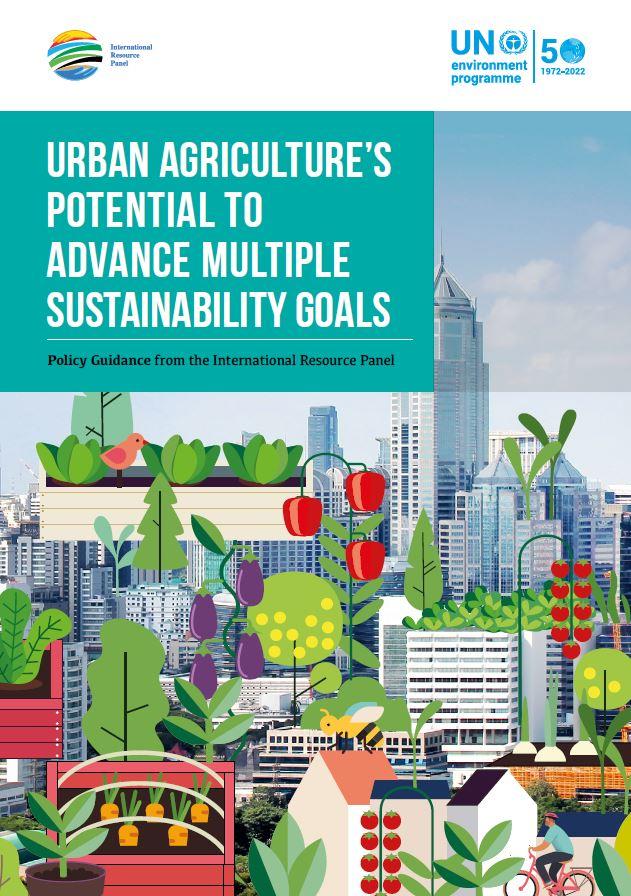
Urban Agriculture’s Potential to Advance Multiple Sustainability Goals: Policy Guidance from the International Resource Panel
Type
Urban agriculture, for the purpose of this policy guidance and based on consistent use in literature across both developed and developing countries, is defined as: agri-food production that occurs both within urban administrative boundaries and in peri-urban areas around urban population centres. Urban agriculture can encompass many modes of agri-food production, including conventional land-based cropping, poultry and livestock rearing; indoor farming in greenhouses and more high-technology controlled-environment agriculture; as well as aquaculture, mushroom farming and insect farming. Urban agriculture has been classified into various types based on the scale/size of the farm, whether produce is sold in markets or used for personal consumption, and the location of the farm, e.g., individual household plots, community allotment gardens and larger urban farms that sell to markets. This policy guidance promotes understanding urban agriculture as part of larger sustainable food systems.
In recent years, there has been rising interest in urban agriculture as a means to rebalance urban-rural linkages, bring nature back into the city, address nutritional insecurity of the urban and peri-urban poor, and offer environmental benefits of lowered food miles traveled, with opportunity for resource circularity such as recycling nutrients from food waste and wastewater treatment to farms. For many cities that are developing food action plans, such as signatory cities to the Milan Urban Food Pact, urban agriculture emerges as a natural focal point with potential to advance multiple Sustainable Development Goals (SDGs) including sustainable cities and communities (SDG 11), good health and well-being (SDG 3), reducing inequalities (SDG 10) and zero hunger (SDG 3), in addition to multiple environmental dimensions related to land, water and climate.
However, urban agriculture is not well understood in terms of both data and science and its effectiveness in advancing multiple dimensions encompassing nutrition, health and well-being, social equity, environmental sustainability, and sustainable cities and communities.
To address these knowledge gaps, this policy guidance serves two purposes:
- To highlight key features of urban agriculture taking an urban-rural systems perspective, drawing on a synthesis literature review across regions of the world to address urban agriculture’s potential to advance multiple sustainability outcomes.
- To develop a road map for designing “fit-for-purpose” urban agriculture policies, taking a systems perspective to respond to different drivers and policy objectives, addressing multiple sustainability goals related to nutritional equity, environmental sustainability, economic development, and community health and well-being, drawing on the key features as highlighted below.

